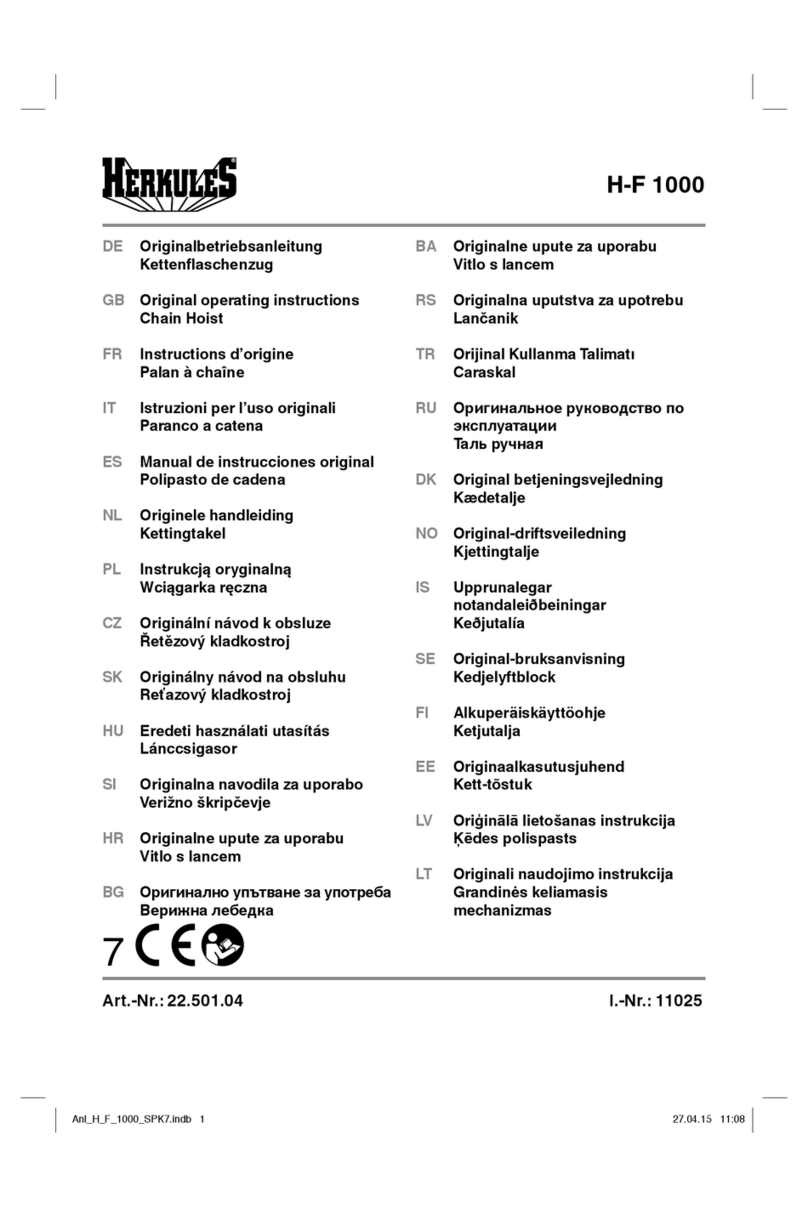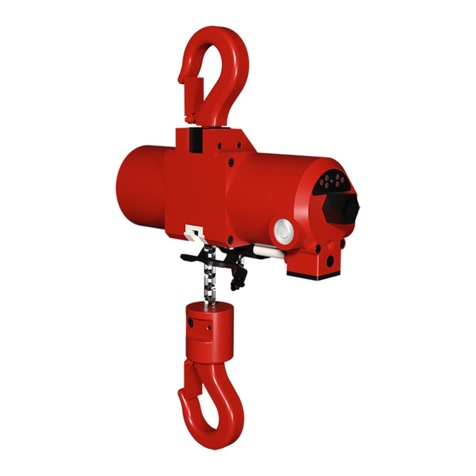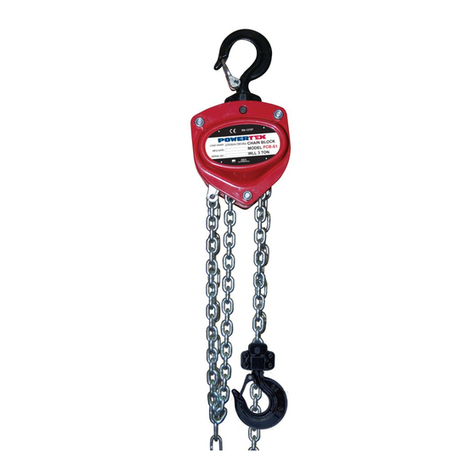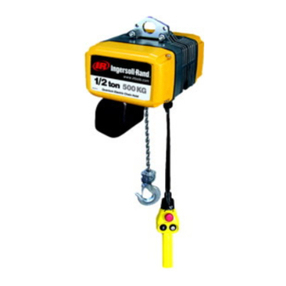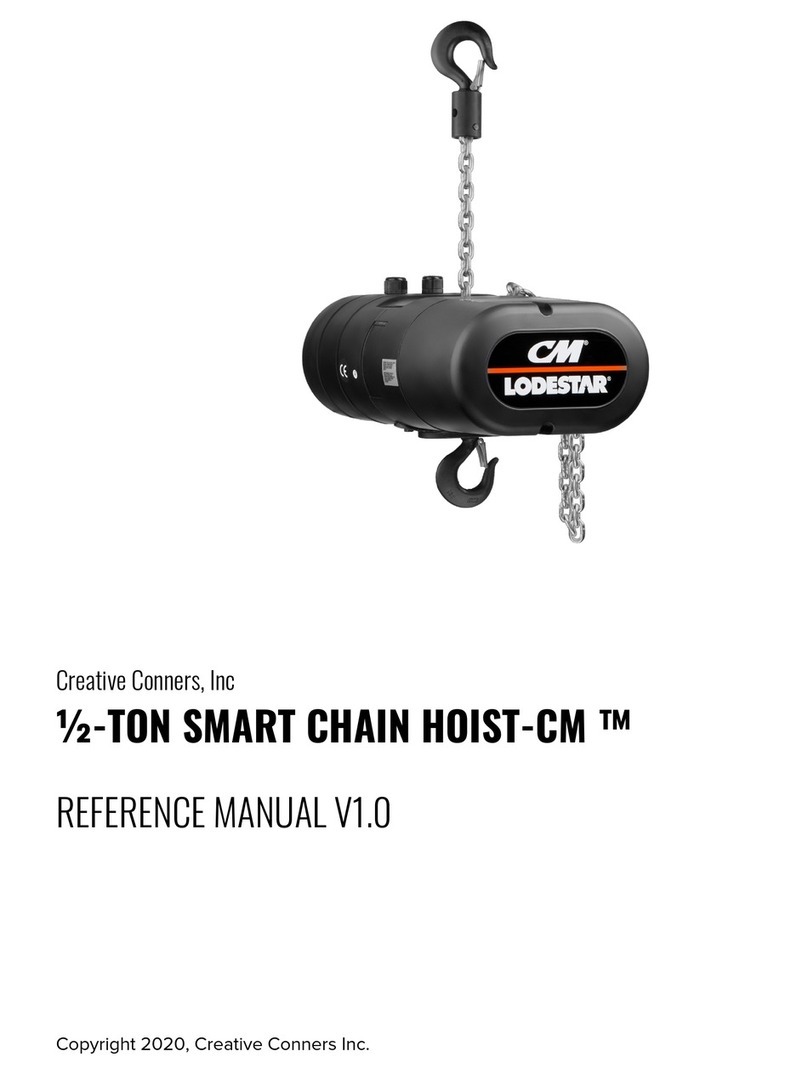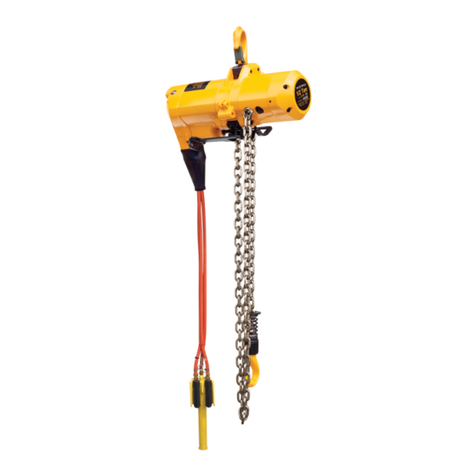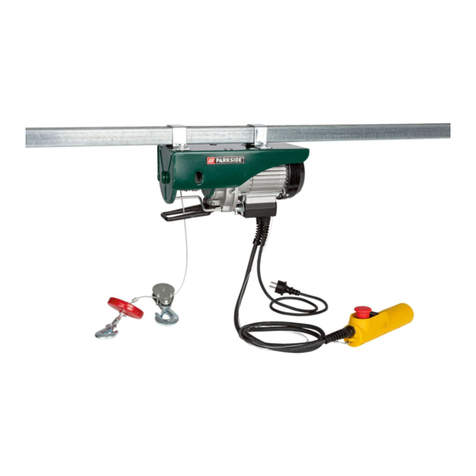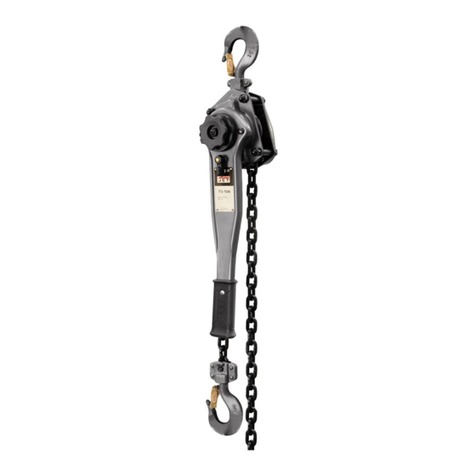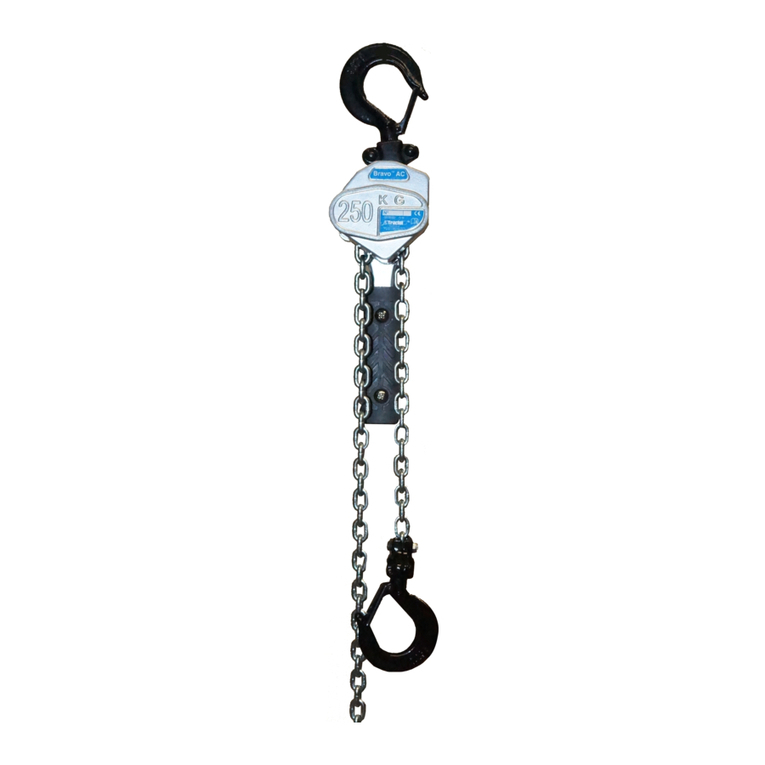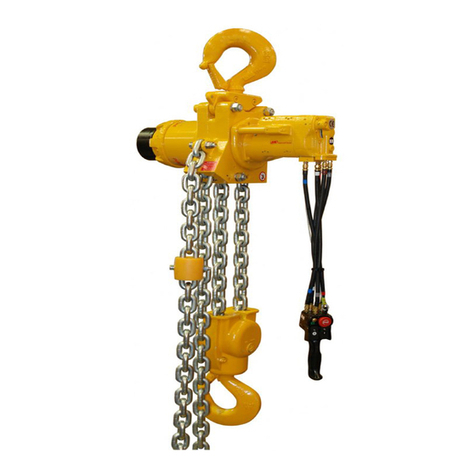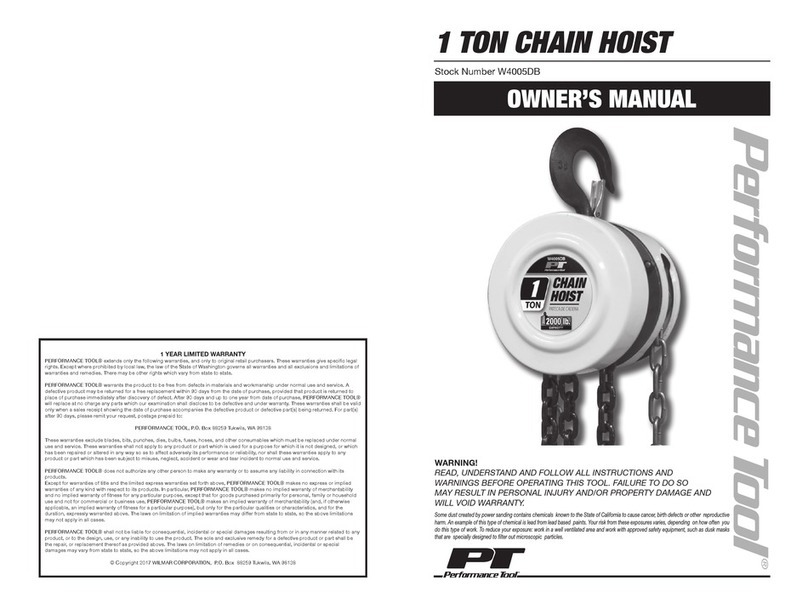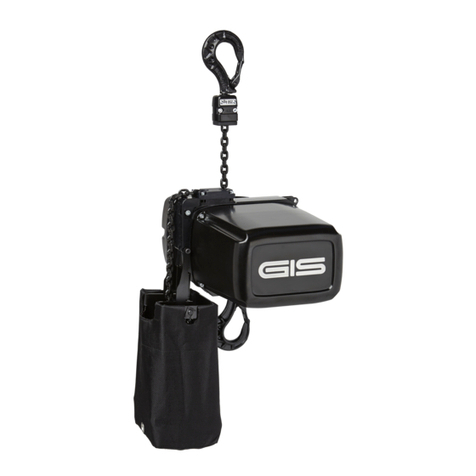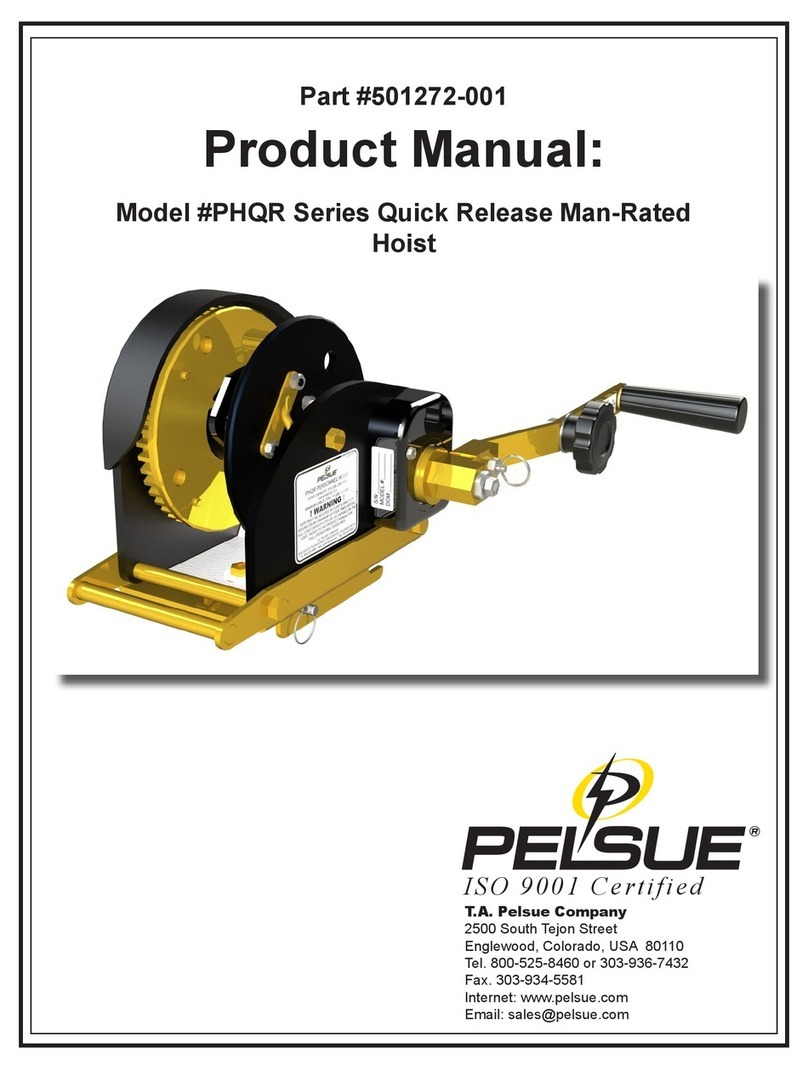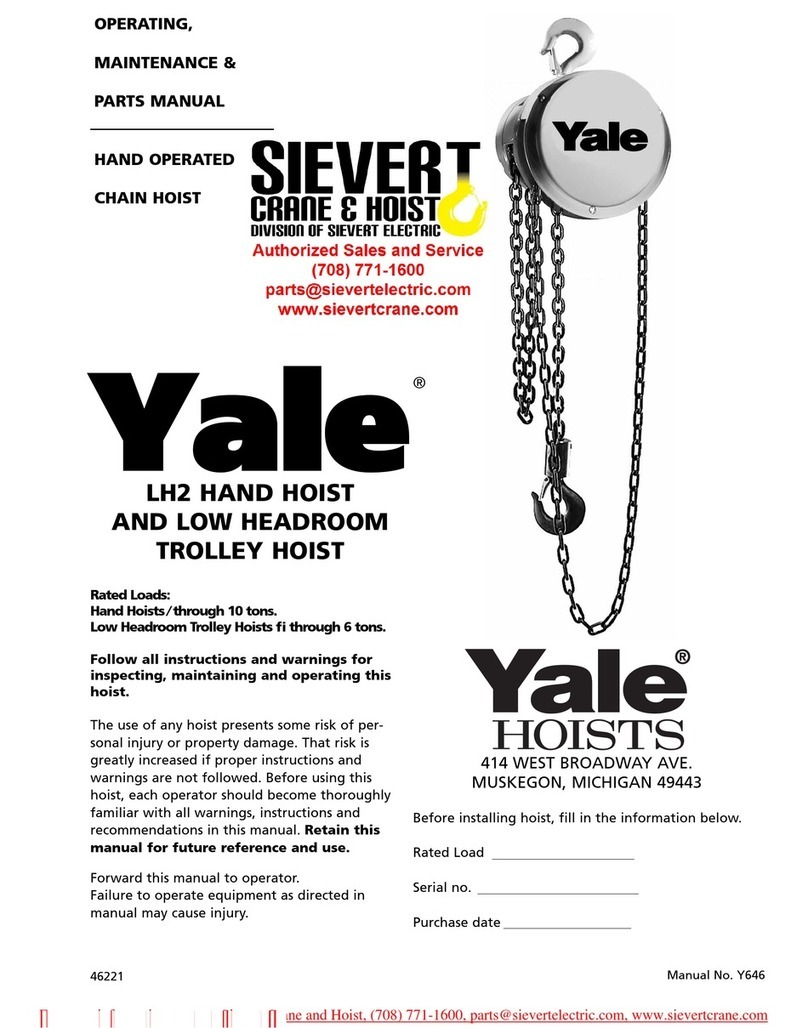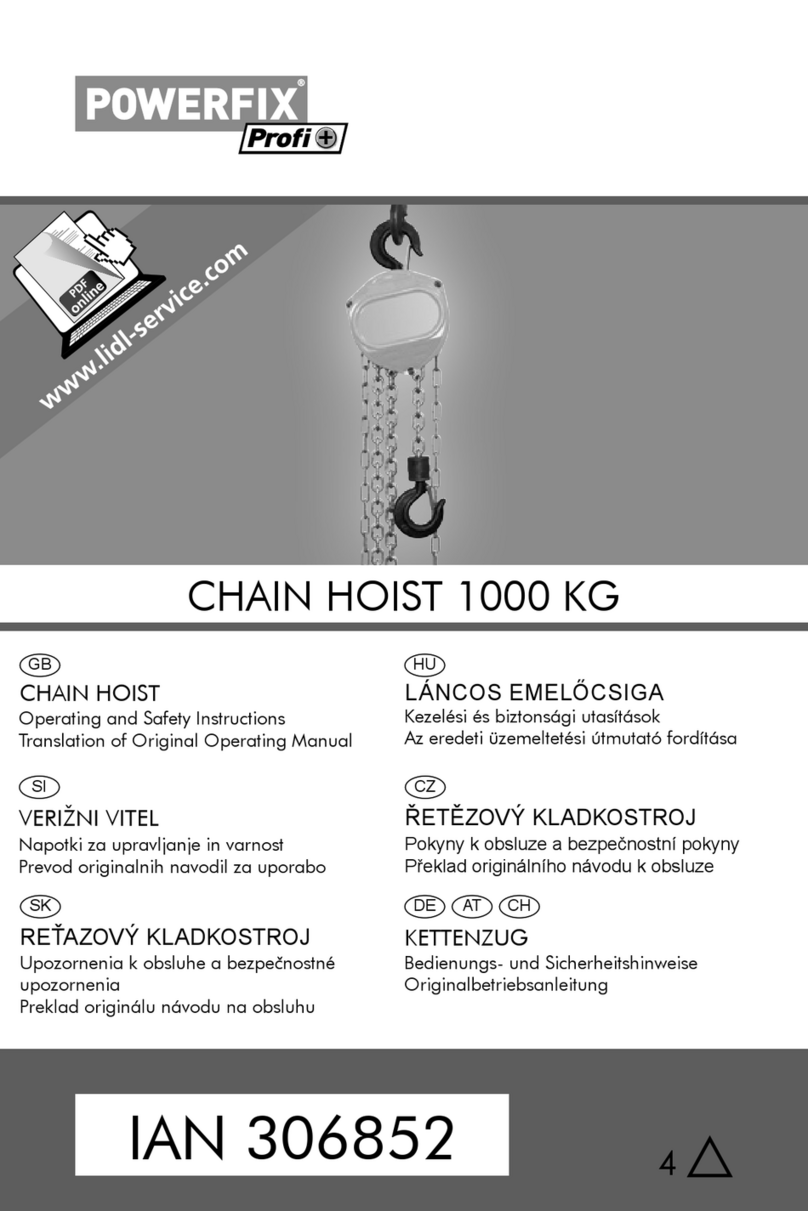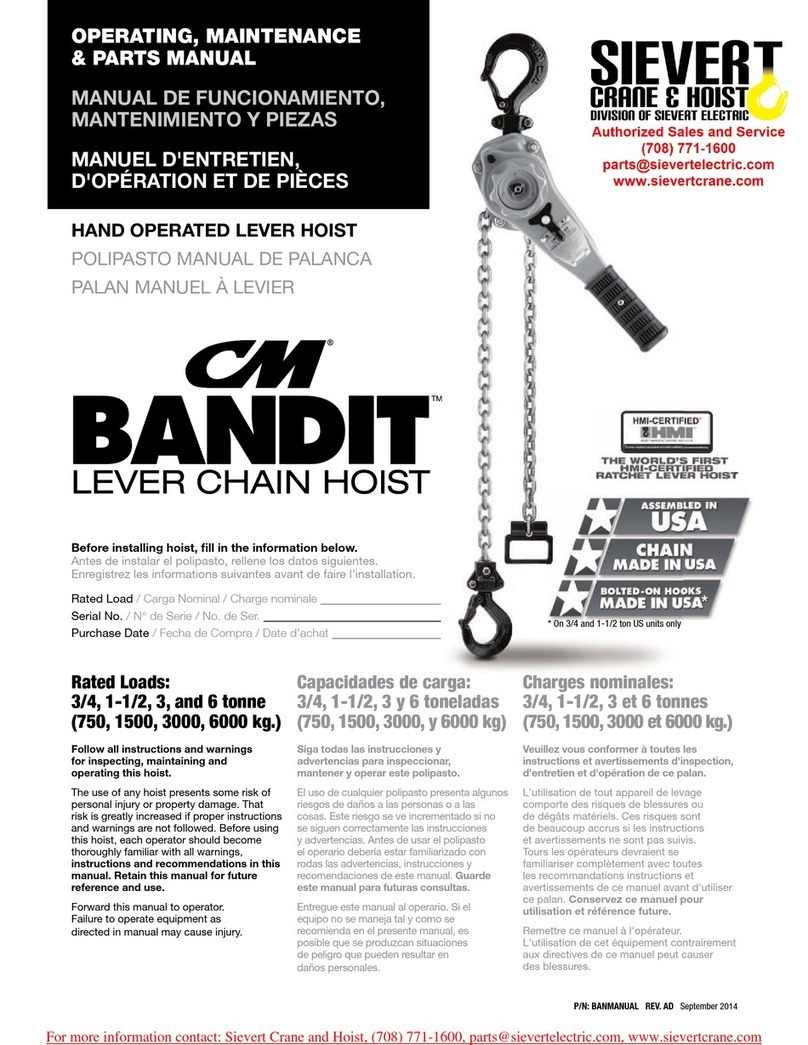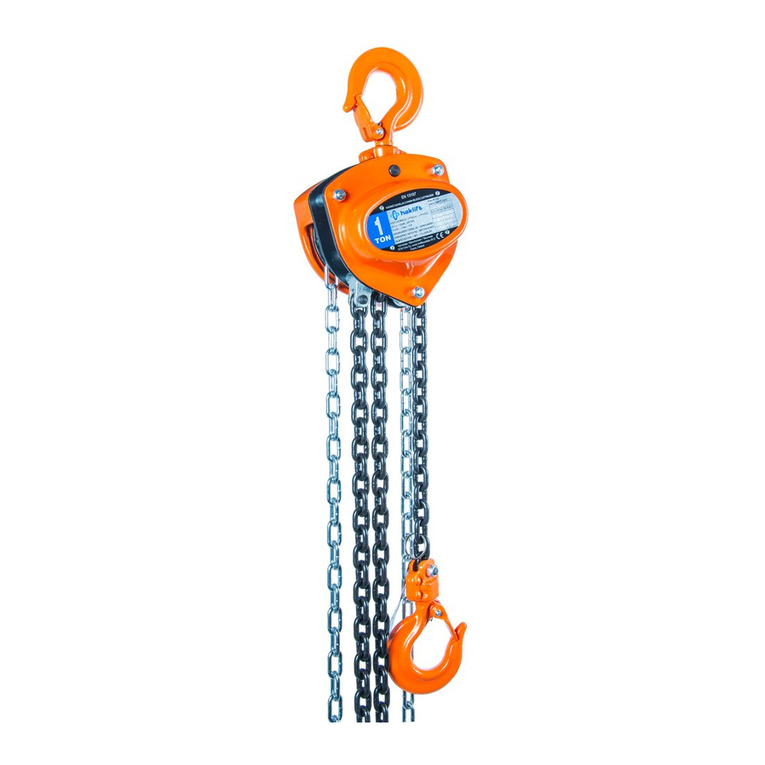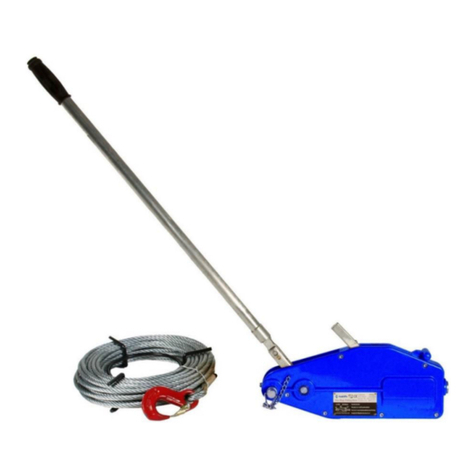2.1.2 Electrical safety rules
1. Before installing, please pay attention to the input rated voltage and current and make sure the hoist is
grounded, in order to prevent accident.
2. There must be a main power switch (main breaker) at main input side of electric control system.
3. Remember to disconnect the main power before repair, maintenance and clean.
4. Unauthorized or untrained personnel cannot repair or maintain any electric equipment.
5. The keys of electric box and mode select should be conserved by authorized personnel. Don’t give the
key or authorized code to unauthorized personnel.
6. Comply with the maintenance instruction to repair and maintain the electric equipment.
7. Before operating the hoist, check all of the electric equipments and parts are broken or damaged or not. If
there is something broken or damaged, replace a new one immediately and please note its original rated
specification.
8. After connecting power, check the direction of motor rotation and the direction of hoist is correct or not.
9. Please check whether the function of emergency stop button is normal or not. The emergency stop button
is used under emergency situation to cut off power of hoist. (Operator usually misunderstand that the hoist
is broken down when they forgot to release the emergency stop button.)
10. Please check whether the function of each safety parts is normal or not, such as emergency stop button,
emergency stop wire, interlocking switch, main power switch, safety valve, limit switch, and etc.
11. Please check whether the screws of each terminal base are tightened or not. If the screws loose, screw
them tightly.
12. The wiring practices of electric control system must be complied with circuit diagram.
2.1.3 Safety rules of hoist
1. Don't misuse the hoist, to avoid danger.
2. Before start the hoist, make sure all the protecting covers are not breakdown and damage.
3. If the mechanism or any part breakdown, operator should stop the hoist immediately and then examine
and repair it.
4. If it results abnormal sound during operation, operator should stop the hoist immediately and then examine
and repair it.
5. If abnormal temperature phenomenon happens during operation, operator should stop the hoist
immediately and then examine and repair it.
6. Don’t modify the original design of mechanical structure, in order to keep the best efficiency and security.
7. Please store the spare parts and tools well, and avoid moist and damage.
8. Untrained or unauthorized operator is prohibited operating, installing or maintaining hoist.
9. Please maintain and repair the hoist according to service instruction.
10. Please replace broken part according to the specification in part list.

